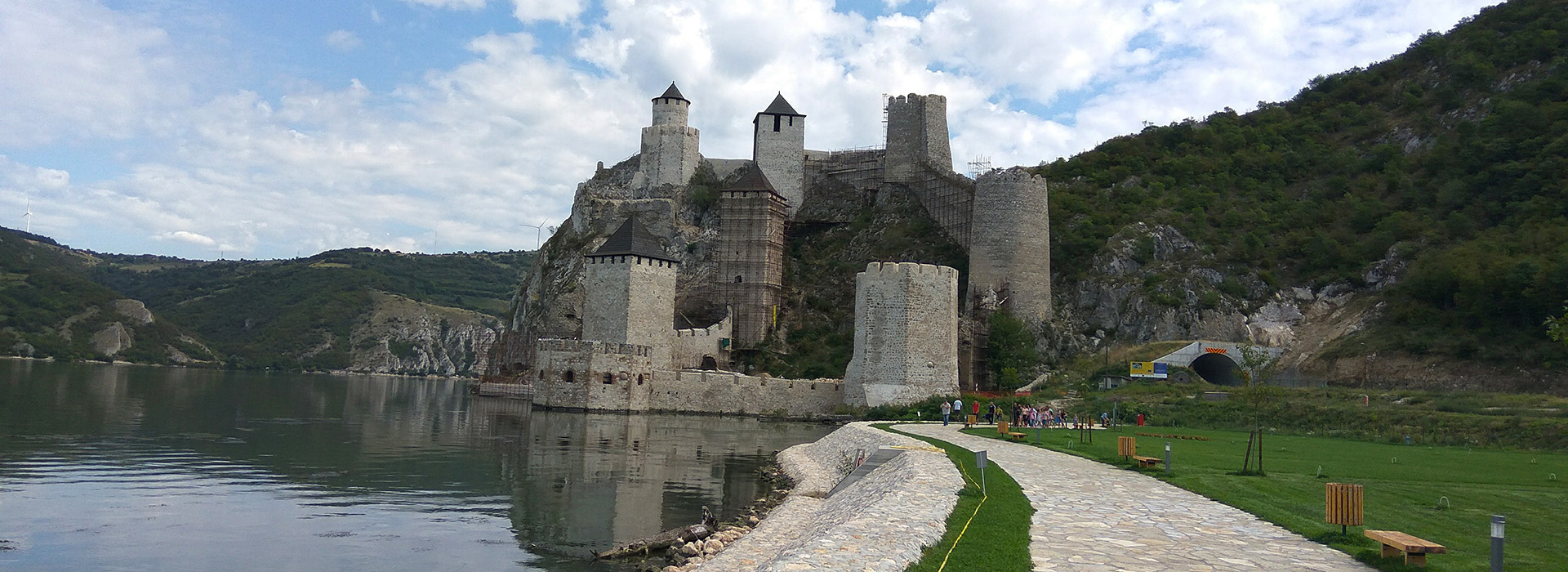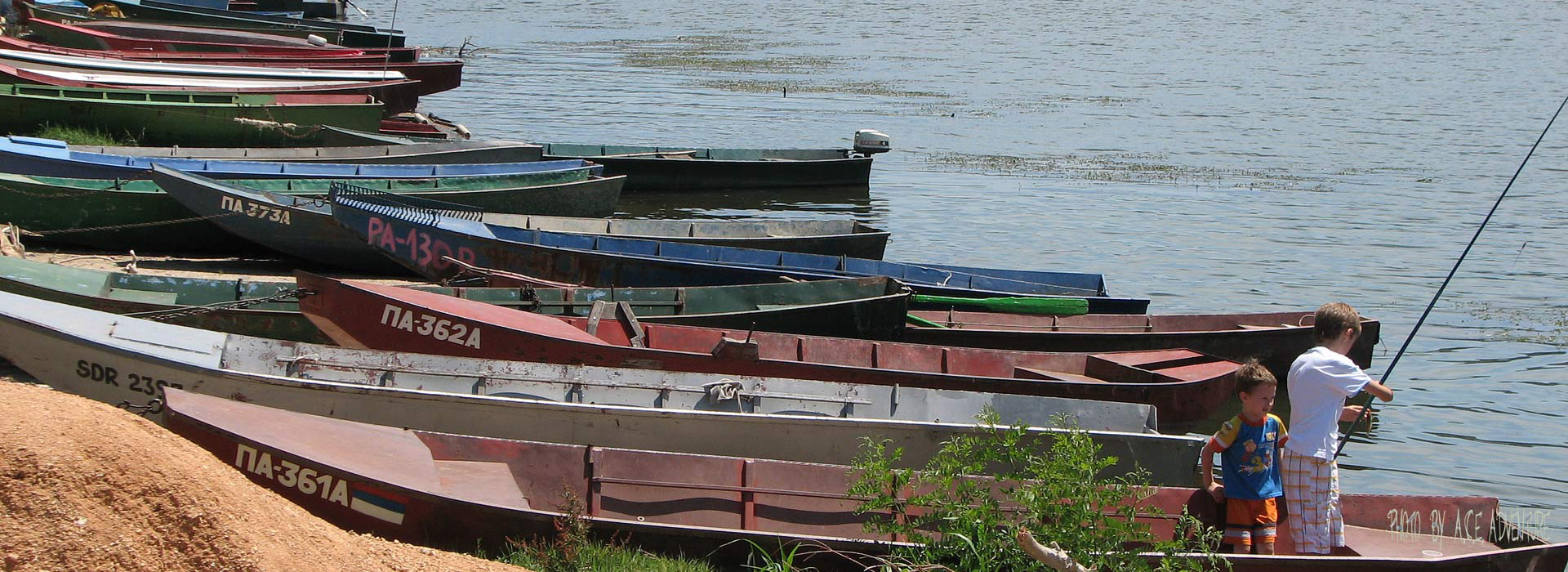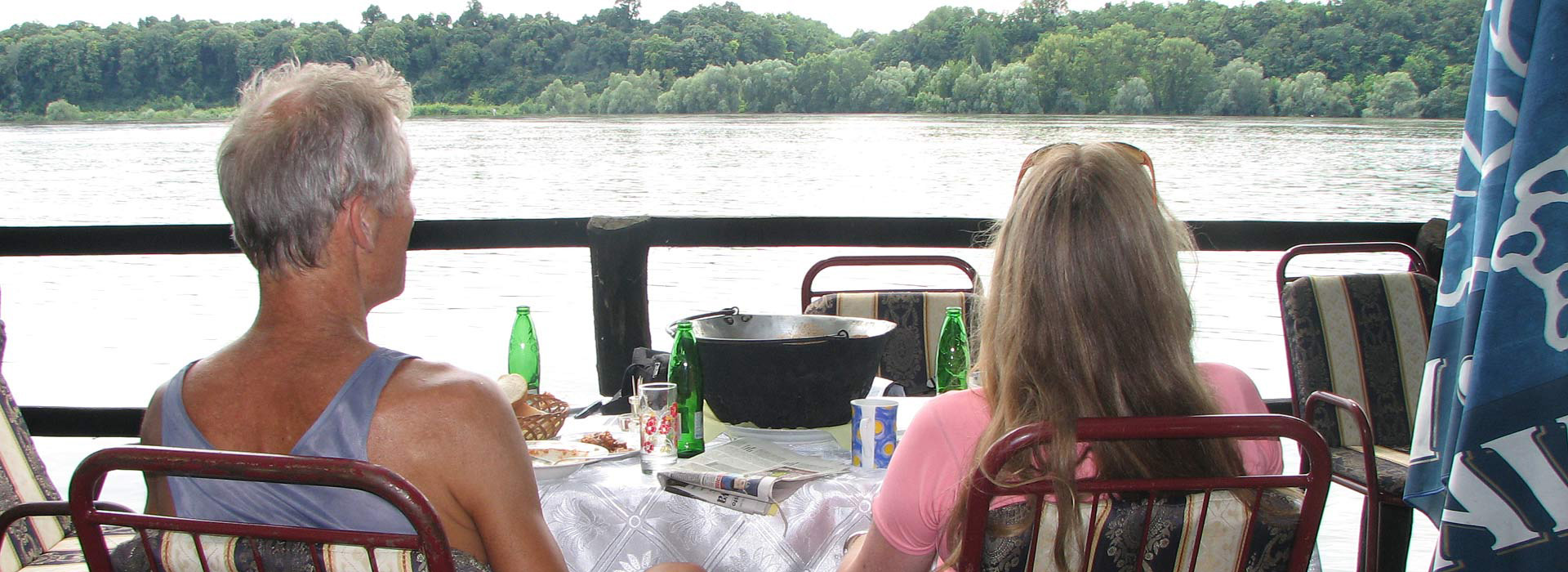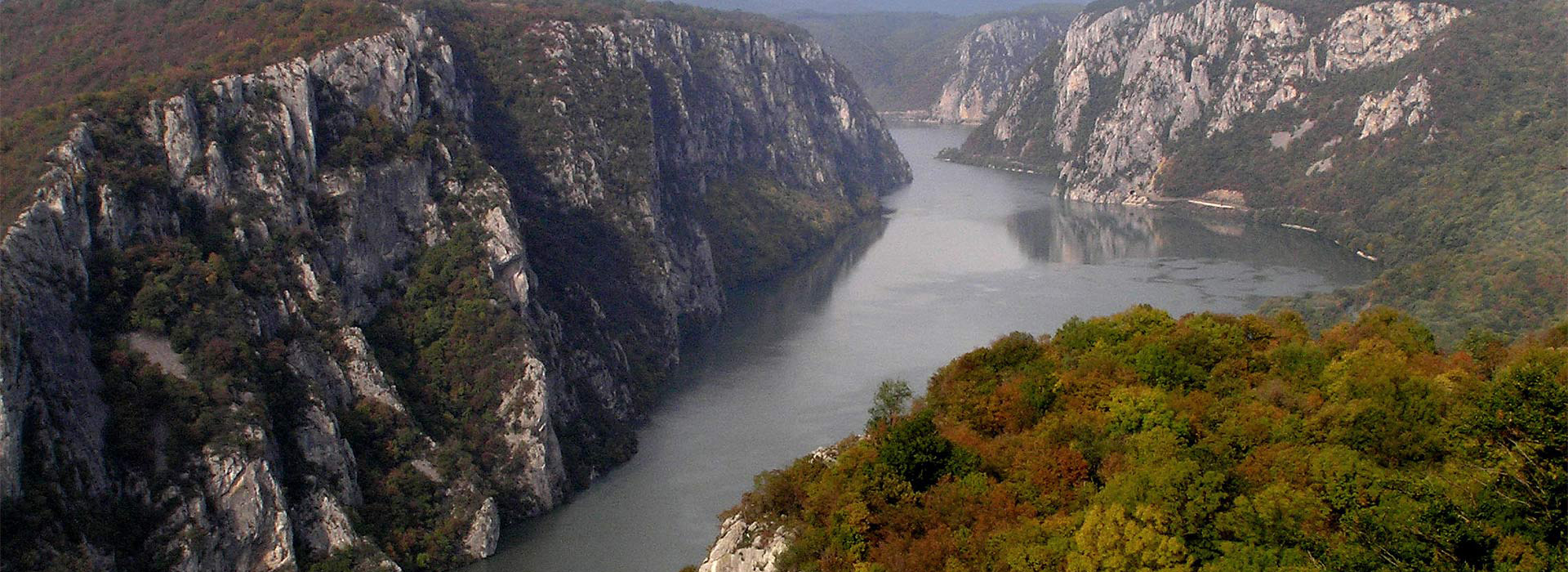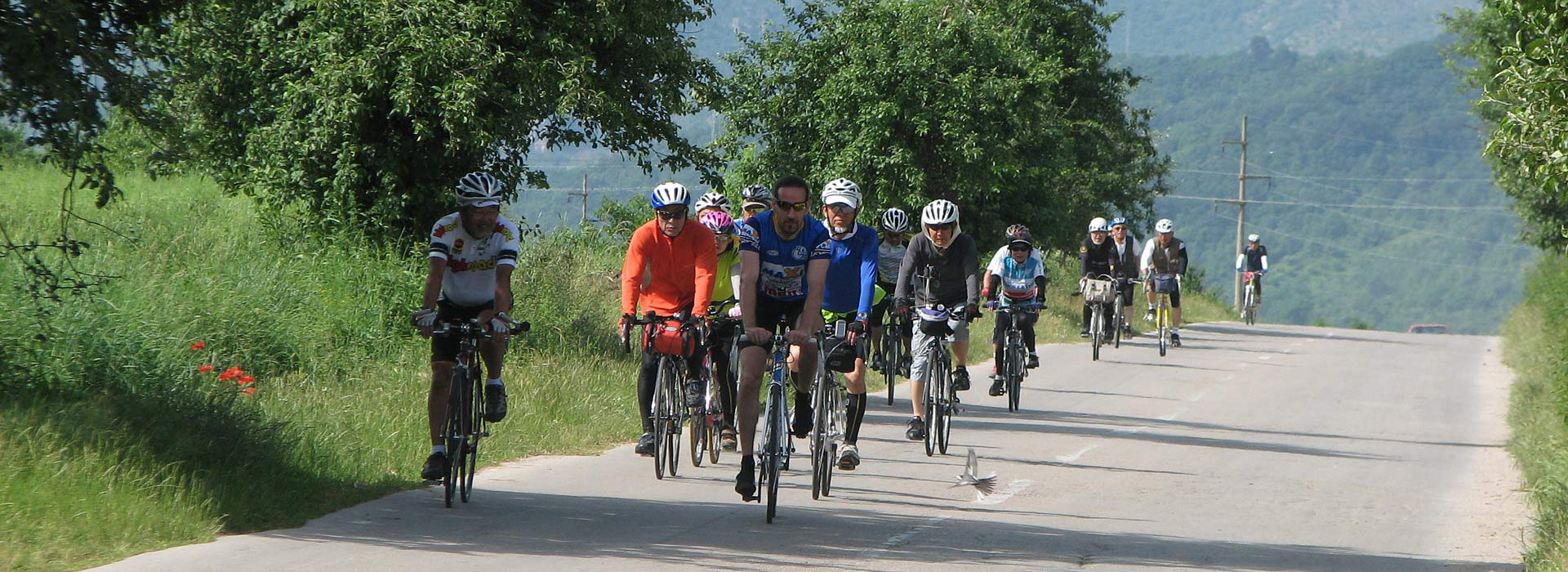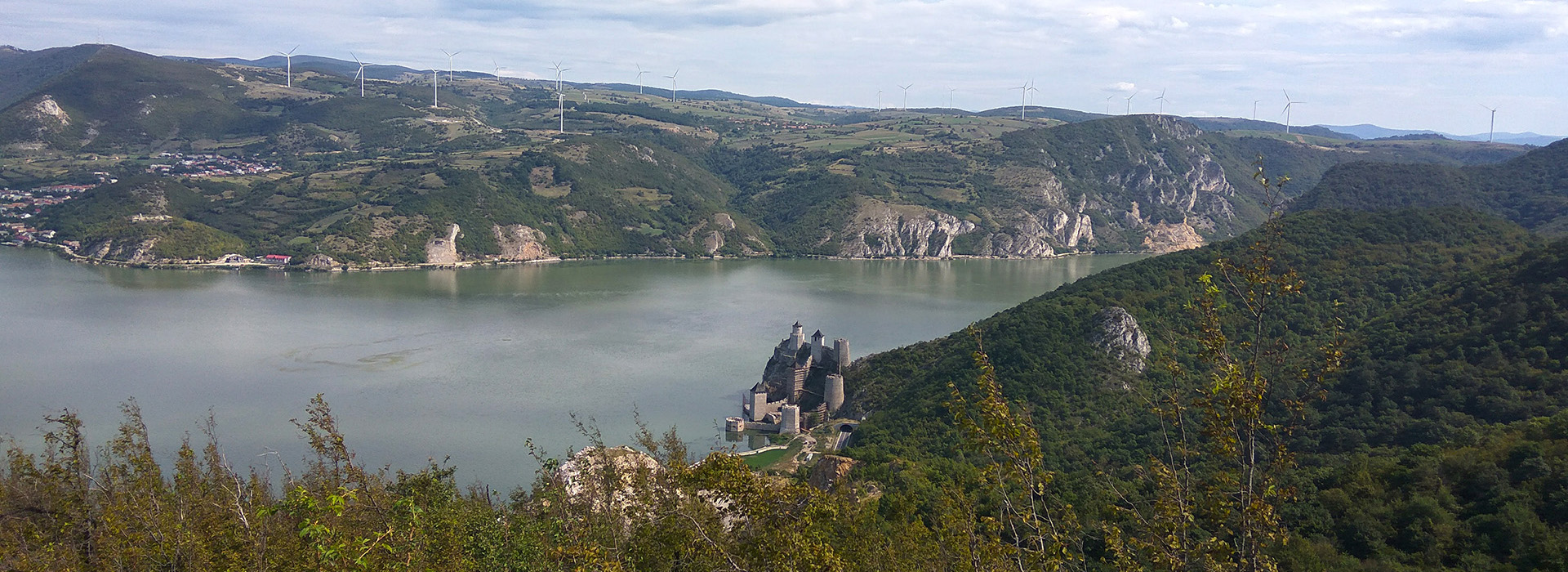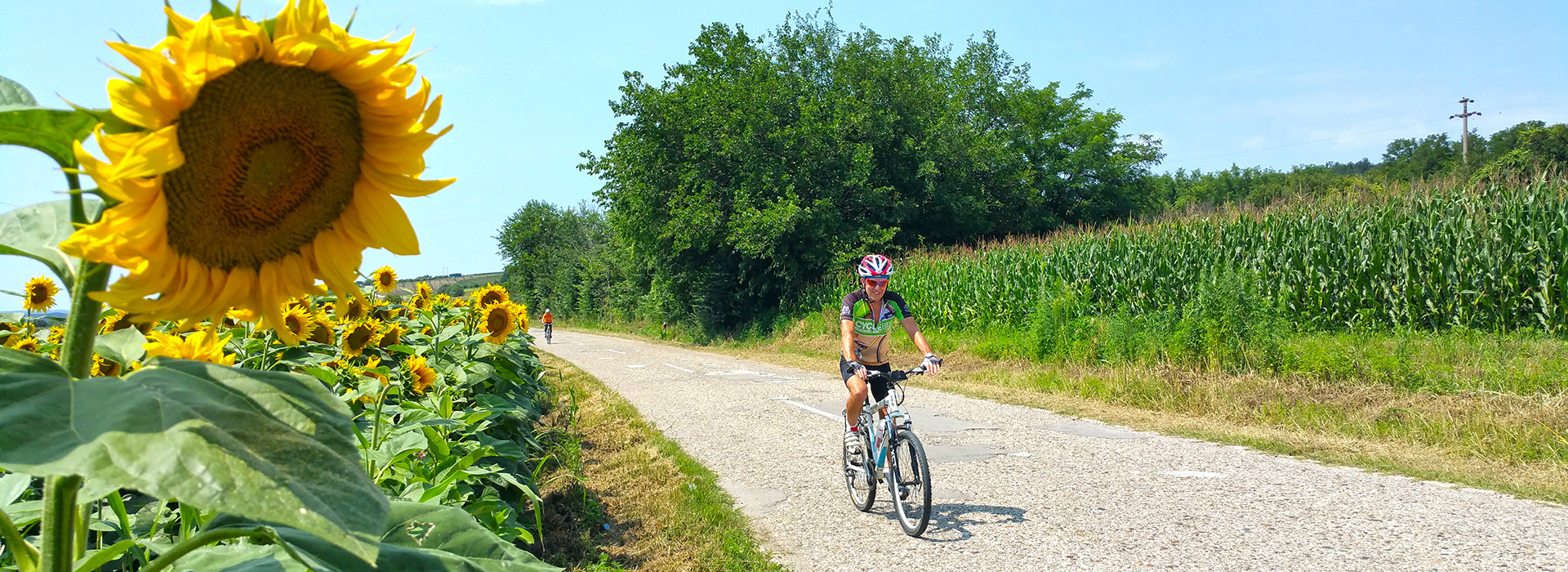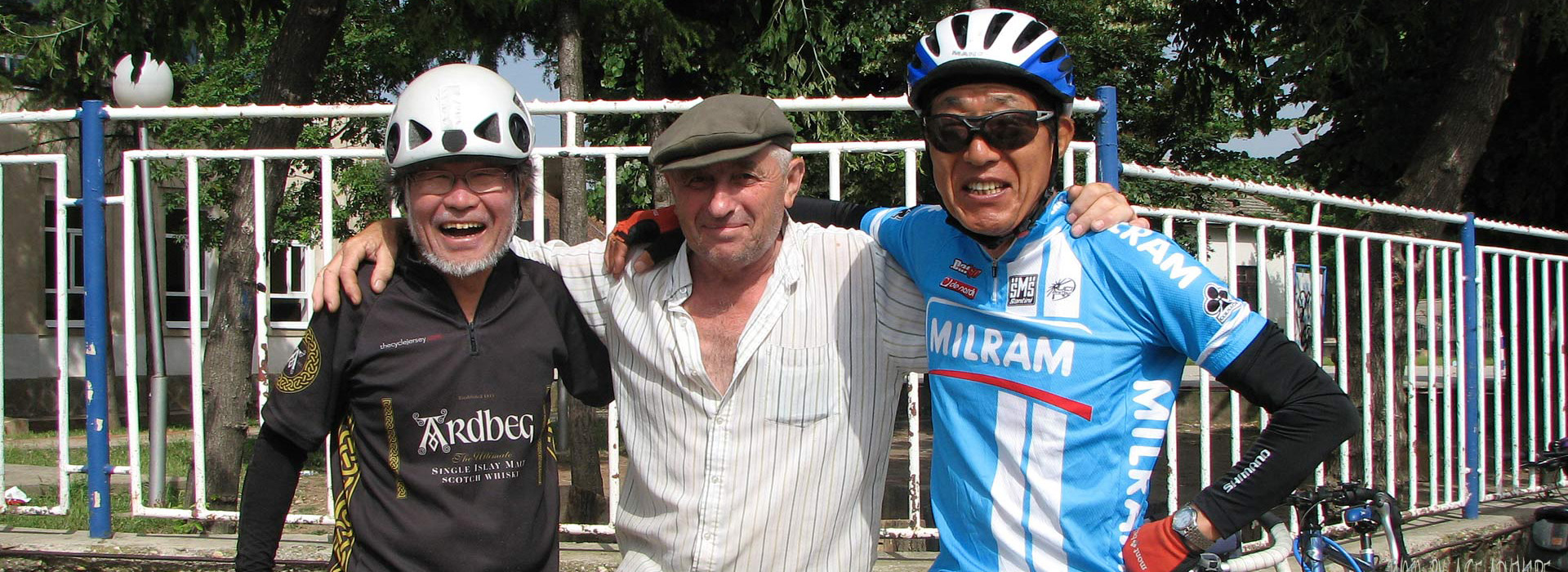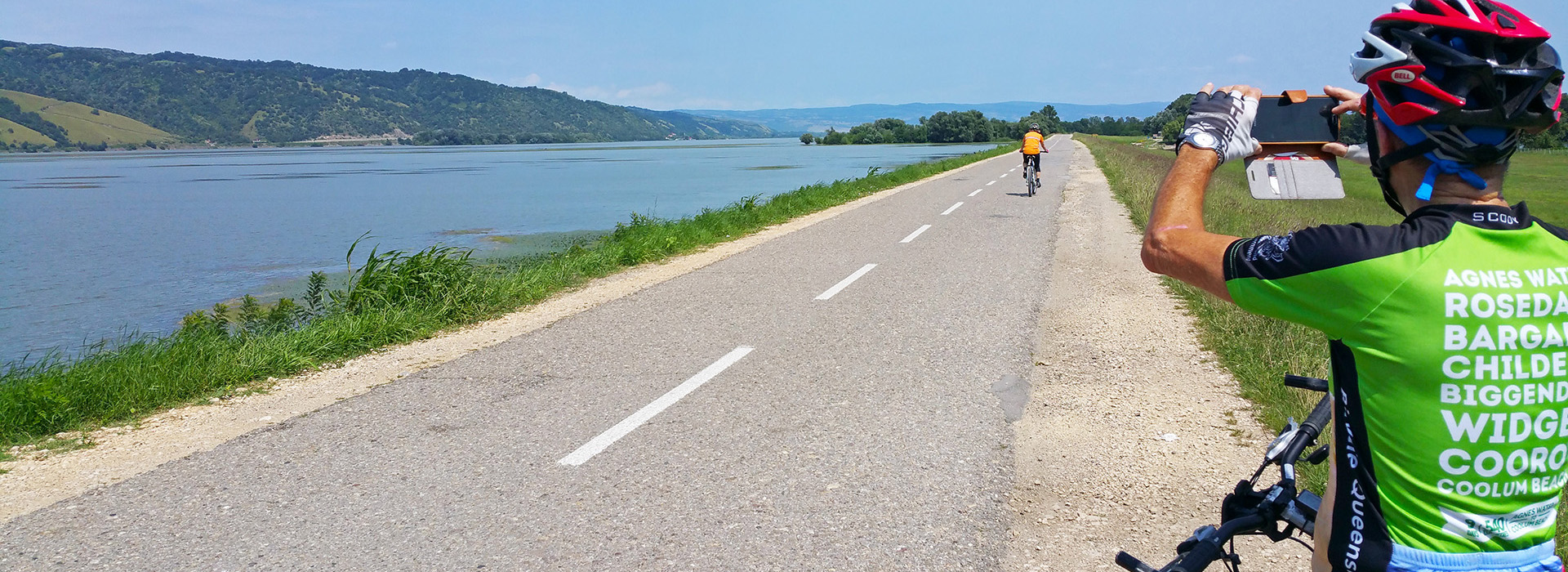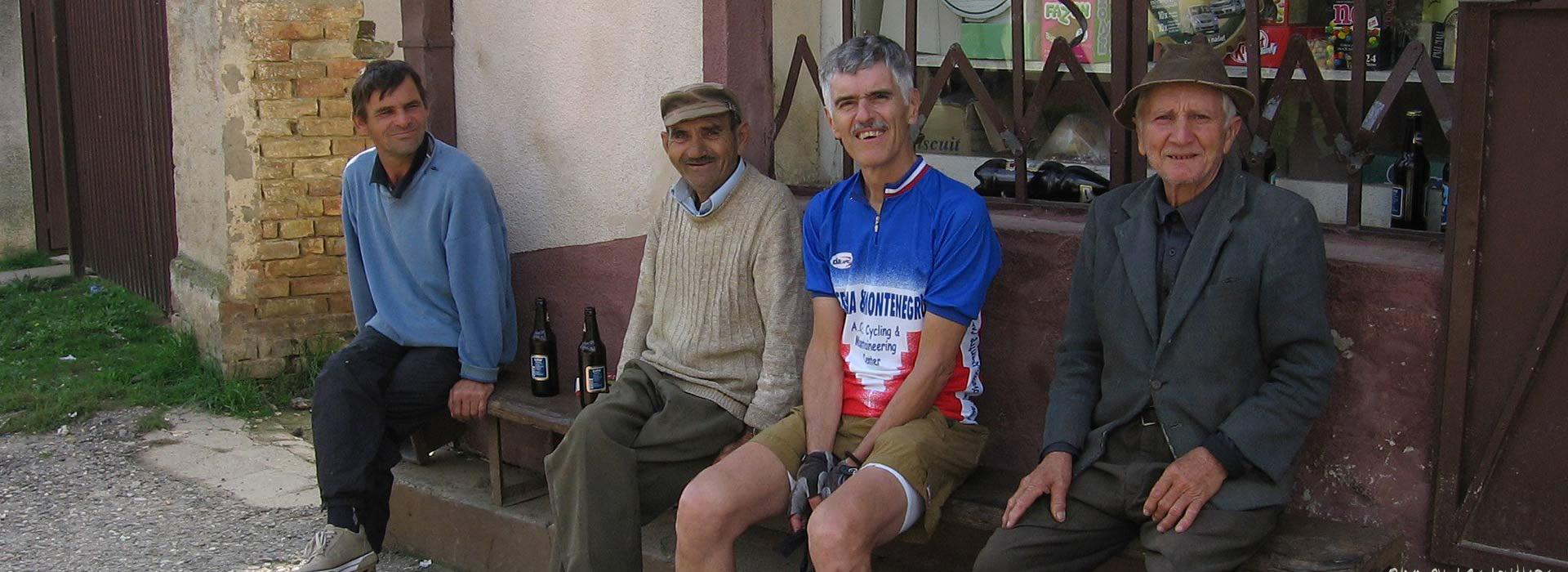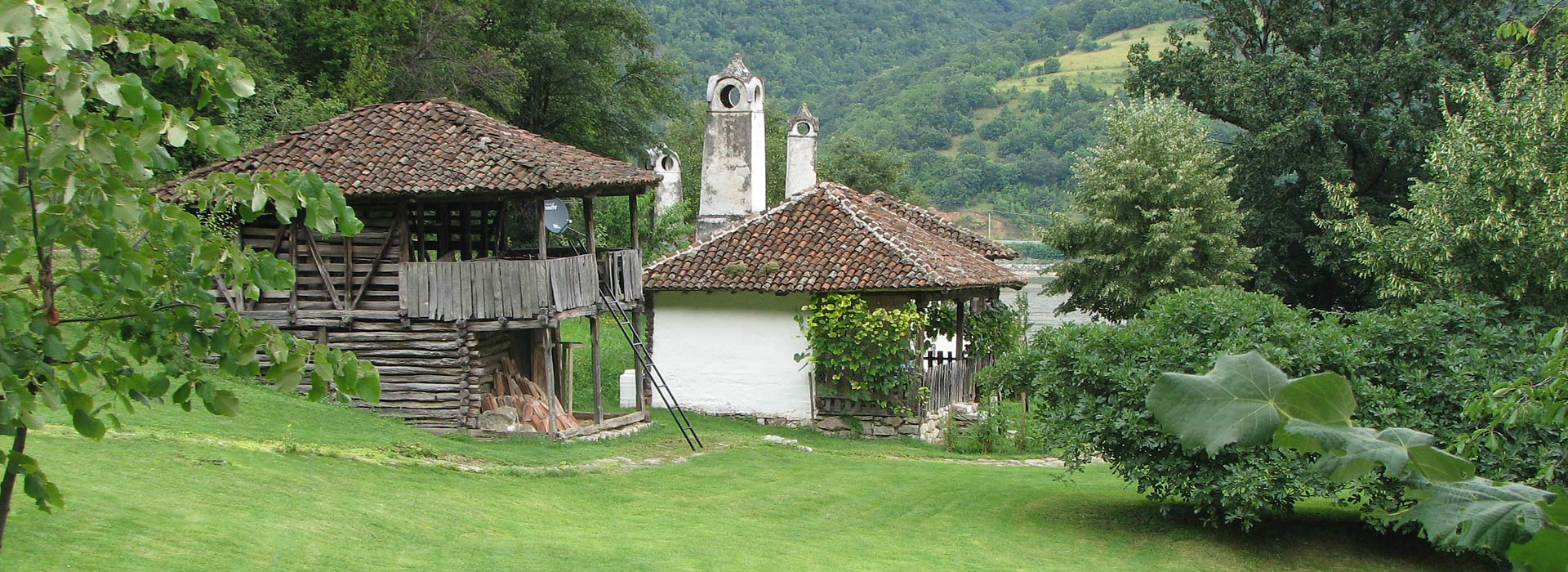
Danube Cycling guided holiday
Explore on two wheels the most spectacular gorge of the Danube river- the Iron Gate
Start cycling in the vast expanse of the Pannonian plains and finish in the spectacular Iron Gate gorge. 8 days / 7 nights cycling guided holiday along the Danube for 1450 EUR (bicycle rental included)
-
Enjoy cycling and we organise all luggage transfers, tasty food and comfortable lodging, mechanic and guide support, even beverages and snacks.
-
Discover the river that unites Europe while cycling on quiet roads and bicycle paths through the amazing historical and cultural diversity of the region where many different civilizations left their traces.
-
A vibrant capital of Serbia, medieval fortresses, impressive archeological sites, national park and nature reserve... all in a week-long itinerary
-
We stay in the finest accommodation available in the area. Enjoy comfort and delicious food after activities
-
Travel in a small group. The maximum group size is 15 persons.
-
Have a safe and risk-free booking. We have adopted all our procedures to WTTC (World Travel & Tourism Council), UNWTO (World Tourism Organisation), and local protocols and standards. Our booking and cancellation policy is adapted to new conditions and maximally flexible so you can not lose your money

BLOG STORY
Read more on ACE Adventure blog
3 Things You Shouldn't Forget When Going on a Balkan Adventure Tour
Making the Most of Your Balkan Adventure Tour: 3 Key Tips to Keep in Mind
Cycling grade:
Moderate
6 Days of cycling with daily distances ranging from 45km to 80km mostly on flat terrain. There are a few couple kilometers long climbs in the Iron Gate section.
RECOMMENDATIONS FOR EXTENSION
An option to extend your holiday for additional days in Belgrade is possible. Please contact us for the conditions of this extension.
Please read and respect ACE Responsible Tourism Policy.
Before you come on this trip please carefully read Rules of Bicycling Safety.
Book with confidence and risk-free. Please read our new booking and cancellation policy
Itinerary
-
-
Meeting the group at the Belgrade airport and transfer to Belgrade. Our 4 star hotel is located in the heart of the old town.
-
Meals Included: /
Activity Free time on arrival at accomodation.
-
-
-
We start the day with a walking guided tour of Belgrade from Terazije square through a nucleus of the white city (a name Beograd means a white city) to Kalemegdan fortress. Lunch in Belgrade.
Afternoon short transfer to Pancevacki Bridge and cycling to Skorenovac village- the most southern Hungarian settlement in Europe. We start our cycling week following a dam and unpaved road along the Danube. Shortly we arrive in Pancevo town where we move to local farm roads which will take us to our charming village of Skorenovac. Accommodation in private pensions and dinner in a local Hungarian restaurant. Total cycling distance 44km km on flat terrain (33km asphalt road, 11km on unpaved road). -
Meals Included: Breakfast, Dinner (in local restaurant).
Activity 44km km on flat terrain (33km asphalt road, 11km on unpaved road).
-
-
-
Today we will explore the area and cycle via town of Kovin to Smederevo and its famous fortress. Smederevo Fortress is situated on a wide plateau at the confluence of the rivers Jezava and Danube. The Smederevo Fortress was built between 1427 and 1430 and was temporary capital of Serbia . Smederevo is the largest medieval lowland type of fortresses in Europe. We will continue our cycling tour with a loop ride via Kulic village and return to Skorenovac at the end of the day. Night in Skorenovac.
-
Meals Included: Breakfast, Dinner (in local restaurant).
Activity Total cycling distance 50km on flat terrain (39.5km on asphalt road and 10.5km on unpaved road).
-
-
-
Cycling along the river on unpaved road (approx. 20km) and through Nature Park Deliblatska Pescara. Crossing the Danube on simple ferry from Stara Palanka to Ram and continue to famous resort Srebrno Jezero where we will stay next two nights.
-
Meals Included: Breakfast
Activity Total cycling distance 60km, flat terrain (55km asphalt road, 5km unpaved road).
-
-
-
Today we will discover one of the most important Roman archeological site in this part of the world. Hidden under the fields of the corn for the centuries, the ancient city of Viminacium is rightly called Balkan Pompeii. Since the first systematic explorations in 1882, over 14.000 graves were excavated with 40.000 various historical artifacts of which more than 700 gold and silver artifacts. This Roman military camp of 6000 soldiers was the capital of Roman province of Upper Moesia (today’s Serbia). It occupies a surface area of over 460 hectares. We will cycle from the Silver Lake resort to Viminacium and then make a loop itinerary and return to the Silver Lake via Ram and Zatonje.
-
Meals Included: Breakfast
Activity Total cycling distance 80km (asphalt road, flat terrain and some long but easy climbs).
-
-
-
Cycling Srebrno Jezero - Golubac Fortress - National Park Djerdap - Lepenski Vir archaeological site - Donji Milanovac.
First stop will be Golubac fortress after 25km long ride. We enter gorge of Djerdap and along the river through national park. Visit Lepenski Vir - an impressive archeological site from Mesolithic period. Continue to cycle to Donji Milanovac town. -
Meals Included: Breakfast
Activity Total cycling distance 80km on asphalt road (a few climbs couple km long and with max ascend of 150m).
-
-
-
Continue cycling through national park Djerdap. Visit Diana Fortress from 2nd century a.d. Night in hotel in Kladovo.
-
Meals Included: Breakfast, Dinner
Activity Total cycling distance 64km on asphalt road (a few climbs couple km long with max ascend of 200m).
-
-
-
Transfer to Belgrade airport (3h)
-
Meals Included: Breakfast
Activity Transfer
-
ACE keeps rights to change daily itineraries.
Tour Information
-
Belgrade
Belgrade’s gritty exuberance makes it one of the most happening cities in Europe. While it hurtles towards a brighter future, its chaotic past unfolds before your eyes: socialist blocks are squeezed between art nouveau masterpieces, and remnants of the Habsburg legacy contrast with Ottoman relics. It is here where the Sava River meets the Danube (Dunav), contemplative parkland nudges hectic urban sprawl, and old-world culture gives way to new-world nightlife. Grandiose coffee houses, quirky sidewalk ice-creameries and smoky dens all find rightful place along Knez Mihailova, a lively pedestrian boulevard flanked by historical buildings all the way to the ancient Kalemegdan Citadel, crown of the city. Deeper in Belgrade’s bowels are museums guarding the cultural, religious and military heritage of the country. Josip Broz Tito and other ghosts of the past have been laid to rest here.
‘Belgrade’ literally translates as ‘White City’, but Serbia’s colourful capital is red hot.Smederevo Fortress
Smederevo Fortress is the last great creation of the Serbian military construction, and one of the largest fortifications in the south-east Europe. It was built with great efforts in order to replace already lost Belgrade, which in 1427, after the death of Despot Stefan Lazarević it was handed over to the Hungarians. As a new centre of Serbia and a Despot Ðurađ Branković’s court, an uninhabited place on the confluence of the Jezava and the Danube rivers was chosen, which conditioned a triangular shape of the fortress ground plan. Unlike Belgrade, the new Smederevo Fortress covers a somewhat smaller defence area, with a simpler interior arrangement. The Smederevo town is one of the largest fortifications in the south-east Europe. As a defence system, it is an extraordinary example of a cold weapons defence fortification and the best creation in the mediaeval military architecture. Its special feature is reflected in a choice of this particular location. Unlike the steep, inaccessible land areas, which found its use in the Middle Ages, here a flat plateau along the river bank was chosen, so today, Smederevo is a synonym for a “flatland fortress” type.
The fort of Ram
The fort of Ram is on a right bank of the Danube. Turkish sultan Bayezid II built it in 15th century, on the remains of an older Byzantine fort. The fortress offers a fantastic view of the Danube at the widest point of its whole course.
Srebrno jezero (Silver Lake)
Srebrno jezero (Silver Lake), is 3km far from Veliko Gradiste town, and due to its vicinity to other cities around the region it has become a very popular destination for tourists and fishermen. Srebrno jezero was made by closingone of the Danube’s backwaters, with well-arranged beaches and water being filtrated through sandy dunes.
It belongs to a group of lakes that positions Serbia among inevitable destinations of travelers who can recognize a genuine, warm and live tradition. It is 14 km long, average width is about 300 m.
It is rich with fish and usually called “paradise for fishermen”, and it also offers good opportunities for numerous water sports. It is rich with catfish, pike-perch, carp and amur and it is mentioned in the Guiness Book of Records since the biggest carp was caught in this lake weighing about 44 kg.Viminacium
Viminacium is one of the most important Roman towns and military encampments from the period from the 1st to the 6th century. The civilian settlement next to the encampment during the rule of Hadrian (117-138) gained the status of a municipium, a town with a high degree of autonomy. During the reign of Gordian III (239) the town was accorded the status of a Roman citizen colony and the right to mint local currency. Such a status was the highest that could be attained by a town in the Roman Empire. Viminacium was often chosen as a mustering point for troops and a starting point in many a military campaign.
The economy of Viminacium developed quickly thanks to its location on the Danube. The exceptional finds made in the necropoles around the town (more than 14,000 graves have been found so far) confirm the belief that its citizens were very wealthy, and frescoes found in the crypts represent the peak of late classical period art. The town was devastated on several occasions, in invasions by the Goths, Huns and finally the Avars. In and around the town there have been discoveries of an amphitheatre, monumental buildings, lavish thermae (baths) and the remains of a highly-developed infrastructure, first and foremost streets, aqueducts and a sewage system. The discoveries made so far have very much affirmed the special significance of Viminacium as the leading Roman Metropolis on this part of the Danube Limes.Golubac Fortress
Most likely built in the 14th century, the Golubac Fortress sits high on cliffs overlooking the Danube at an area known as the Iron Gate. This fortress was a key in the defense of the medieval Serbian state and later passed into the hands of the Ottoman and Austro-Hungarian empires. The fortress has irregularly shaped foundation and is surrounded by walls which follow the configuration of the terrain. Within these walls, the city is divided into a few units, and nine massive towers are all connected and situated in such a way so the city can be defended from the land as well as from the river.
The National Park Djerdap
The National Park Djerdap stretches along the right bank of Danube, for about 100 km, from Golubacki grad fortress to Karatas near Kladovo, thus being one of the longest gorges in Europe. The part of the river Danube which belongs to Serbia accounts for about 9% of surface of the National Park. Therefore the National park Djerdap is also a river national park. The Park is typical river valley park, with Djerdap gorge, the principal natural phenomenon, with cultural and historical monuments, natural scenery, preserved original ecosystems and age-old plant and animal life of remarkable value and rarity. The most beautiful gorge of the Djerdap is Veliki Kazan. In this part of its course, the mighty Danube is seized between steep, often vertical cliffs that rise even up to several hundred meters above the river, which is not wider than 170 m. Exactly at this point the Danube is the deepest. The depth of 90 m, measured in one of the huge hollows that are present in the Danube riverbed, represents one of the greatest river depth on Earth. It is only here where it can be seen in a striking manner how Djerdap (Iron Gate) got its name. The area of Derdap gorge was declared a national park in 1974.
The National Park Djerdap is distinguished from other parks for its unique and exceptionally significant monumental heritage. This primarily refers to the archaeological find Lepenski Vir. During the systematic archaeological activities that preceded the construction of the first Iron Gate dam and formation of the reservoir, remains of a previously unknown prehistoric culture were found on the Danube terrace Lepenski Vir on the right riverbank. This finding was a true sensation in archaeological circles.The settlement with sacral buildings of specific construction and shape and sculptures made of huge round pebbles, representing fantastic fish-like creatures, belong to the one of the most complex prehistoric cultures from the period between 7,000 and 6,000 B.C. In the narrow valley in the form of an amphitheatre, complex social and economic relationships were developed, with the most ancient urban structure, sacral architecture, and monumental sculptures on the European continent to date.The Iron Gate Dam
The Iron Gate Dam was built during the 1960s as the basis for a large hydro-electric power plant which supplies Serbia with a significant proportion of its electricity. The basic activity of this hydro power plant is not only electric power production, but also operation of water locks in the “Djerdap I” and “Djerdap II” systems. “Djerdap I” has two-level water locks (ships enter the chamber and then they are “led” into the end water level of the Danube at the chamber end). In terms of chamber dimensions, these water locks are among the largest ones in the world.
-
During this 8 days journey, we stay two nights in 4 star hotels, three nights in B&B, and 2 nights in 3 star hotels. All rooms are cosy, charming and with private facilities. We pay special attention to the choice of food and all places where we have included dinners have restaurants with great choices of local specialities. If you have some dietary restrictions we will be happy to adapt our menu to you.
-
-
Transfer from Belgrade airport to the hotel. Regardless of your arrival time, a private transfer will be organized for you.
-
seven lodgings (two nights in 4 star hotels, two nights in 3 star hotels, three nights in pensions )
-
seven breakfasts and three dinners
-
transportation and luggage transfer during the tour
-
full guiding service and bicycle mechanic support
-
entry fees for all museums
-
snacks and refreshing drinks during the daily tours
-
use of 24 speed hybrid bicycles
-
van support during cycling tours
-
transfer from the hotel in Kladovo to Belgrade’s airport
The following services are included in the price:
The price is based on double room occupancy.
Single room supplement 180Euros.
E-bike rental: 260 Euros
The tour is available from April to November
Bicycles
We provide 24 speed hybrid bicycles. They are designed for riding both on paved and not paved roads with 28" wheels. Every bicycle has handlebar bag with map case as well as water bottle. Bicycle bag can carry max 5kg-11lb weight. If you prefer you can bring your own saddle and have us install it on our bikes. All our bicycles are provided with platform pedals. If you are used to ride a bicycle with clipless pedals they are welcome to bring them and we will install them on our bicycle.
E-bikes are also available for this trip. Our E-bikes are Scott E-Sub Cross or similar.
-
-
-
Travel Information
All distances in Serbia are given in kilometers. 1 mi=1,61 km, 1km =0.62mi, 1ft=0.3m/ 1inch=2.54cm
Weather Information
Weather is difficult to forecast but, normally, Serbia has a continental climate. Autumn is often with extended periods of warm , sunny weather. The coldest month of the year is January with average temperature a little bit over 0˚C. Spring is usually very pleasant with daily temperature between 15˚C and 20˚C and occasional rain and showers. The hottest months are July and August with average temperature about 23˚C and daily temperature above 30˚C. The country as a whole receives an average precipitation of between 600mm and 800 mm annually in the plains- about the same as that of southeast England – and about 800mm and 1200mm in highland regions. In July and August we usually have some days with daily max temperature about 35C.
Packing suggestions
Casual seasonal clothing is recommended for most occasions. You may wish to bring a light sweater and a light jacket. Padded bicycle shorts and bicycle gloves are useful. Sport shoes/ sneakers would be fine for cycling tours as all our bicycles are provided with platform pedals (if you bringing with you clip-less pedals you should bring also adequate shoes). We strongly recommend that you wear a bicycle helmet whilst cycling. We believe that there is no helmet like your own and we do not provide helmets locally. Like a well-fitting pair of walking boots, helmets are a very personal item of equipment. It is also more hygienic to wear your own rather than one which has been used by someone else previously. We recommend bringing a bicycle helmet, cycling sunglasses and some bicycle or walking rain gear. You should also bring some SP and anti-mosquitoes cream. Also, bring a swimsuit for swimming opportunities on the trip.
NOTE: A cycling helmet could be bought locally for the price of 30EUR. Please order it in advance.General Information
Currency and Exchange
Serbian Dinar is monetary unit and consists of 100 paras. For 1 Euro you can get 117,00 dinars (current exchange rate). In all cities and towns you can find change offices. Most of them have a good exchange rate and do not charge commission. Most of change offices are open from 8am to 8pm. ATM machines are available in all big cities but also in smaller towns such as Sombor, Apatin, Backa Palanka, Donji Milanovac and Kladovo and they require a PIN number. For arriving by plane, there is an ATM at the arrivals hall (downstairs) of Belgrade’s Surcin Airport, which will accept VISA, VISA Electron, VISA Plus, MasterCard, Maestro and Cirrus cards. Some of the restaurants and shops accept credit cards (Visa, MasterCard, American Express, Diners). The most widely excepted credit cards are VISA, closely followed by MasterCard.
Traveller’s cheques are a little harder to change: Branches of Raiffeisen Bank or Komercijalna Banka are probably the best bet but beware of high commission charges. For Eurocheques, branches of ProCredit Bank are probably the best bet. Neither personal nor travellers’ cheques can normally be exchanged for goods in shops, so credit cards make far more sense.
Banks are generally open from 08:00 to 19:00 on weekdays and from 08:00 to 15:00 on Saturdays.
In smaller towns it is useful to have enough cash. Foreign nationals may take a maximum of 120.000 dinars in or out of the country.
Most of the shops are open from 9am to 9 pm and remain open through lunch.
Restaurants: The main meal is taken at lunch from 1pm to 3pm. Restaurants serve dinner in the evening from 8pm till 11pm.Electric Current
In Serbia electric current is 220 volts, 50 HZ. To use American or British electrical appliances a plug adapter is necessary. Electric plug used in Serbia is type C (the same one is in use in Croatia, Belgium, Egypt, Italy, Hungary, Luxemburg, Netherlands, Norway, Bulgaria, Romania, Switzerland, Turkey, Vietnam, etc.
Telephone
Telephone plug used in Montenegro, Croatia, is US RJ-11 phone plug
Telephoning Home
Most of the telephone cards (AT&T…) do not work in Serbia. The most convenient way for telephoning home is to use your mobile phone. Note that telephoning from Serbia will involve roaming charges, so please double-check with your mobile provider at home about the rates and conditions.
To make a direct international call, first dial 00 (code to access international line) then the country code, the area code and local number. The country code for Australia is 61, Norway 47, Great Britain is 44, USA and Canada 1, France 33, Germany 49. To make a national call just dial area code and local telephone number. City codes Belgrade 011, Nis 018, Novi Sad 021. Important phone numbers: Police 192, Fire department 193, Ambulance 194.
ACE Emergency phone (24h available) +381 (0)64 24 76 311.
Language
Official language is Serbian but English is widely spoken specially in a bigger towns. Both Cyrillic and Latin Alphabet is in used.
INSURANCE
Travel insurance is highly recommended for all clients whilst on a tour organized by ACE. Clients together with their personal property including baggage are at all times solely at their own risk. Clients are wholly responsible for arranging their own insurance. Clients are responsible for ensuring that they are in possession of private Travel Insurance with protection for the full duration of the tour in respect of at least medical expenses, injury, death, repatriation, cancellation and curtailment, with adequate cover. Clients making their own arrangements should ensure that there is no exclusion clauses limiting protection for the type of activities included in their tour. Clients should satisfy themselves that any travel insurance is what they require and should arrange supplementary insurance if need be.
Responsible Travel
Before you come on the tour please read and respect ACE Responsible Tourism Policy
Personal Expenses
MEAL PLAN
Meals other than those included in the itinerary are paid for separately by traveler. Examples of some costs are provided below:
-
Coffee / Tea - 0.8 Euro
-
Soft drink - 1 Euro
-
Bottle of beer - 1-2 Euro
-
Bottle of wine - 5-15 Euro
-
Two course meal - 8-10 Euro
-
Three course meal - 12-15 Euro
Local fares in small towns
Tipping
Although entirely voluntary, tipping is a recognized part of life in this part of the world. Gratuities for the staff of the ACE Adventure is discretionally but always appreciated by the staff and we will be happy to provide guidelines.
-
-
Photos
Dates & Prices
Date Start
Date End
Duration
Availability
Price










